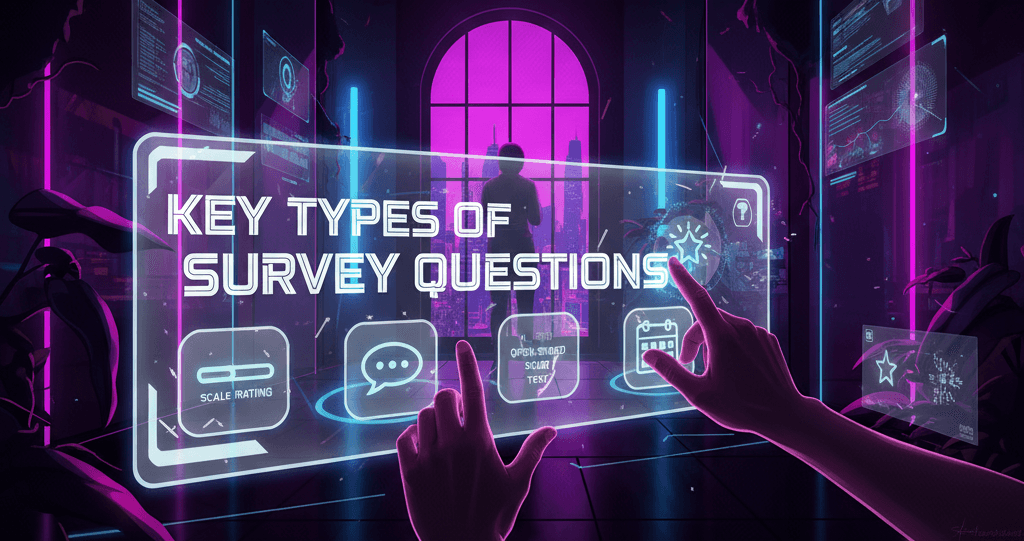AI-powered forms are transforming the way SaaS businesses interact with users, collect data, and provide intelligent experiences.
No longer are forms just passive interfaces designed to gather information; they are now active participants in the user journey, learning from every click, pause, and submission. These forms adapt over time based on user behavior, becoming more efficient, intuitive, and personalized.
In a SaaS ecosystem where user engagement and conversion are paramount, AI-driven forms offer a competitive edge. By integrating behavioral data into form logic, businesses can dramatically reduce form abandonment, improve data quality, and streamline customer support.
This article explores how these smart forms evolve, the technologies powering their intelligence, the benefits they offer to SaaS companies and support teams, and the best practices for implementation.
Understanding Learning in AI Forms
Dynamic User Modeling & Behavioral Analytics
The first step in making forms intelligent is understanding how users interact with them. Every click, scroll, pause, and exit provides valuable behavioral data that can be logged and analyzed.
By capturing and interpreting this data, AI systems can build dynamic user models that reflect real-time behavior, preferences, and needs. These models allow forms to adjust their layout, questions, or interaction flow depending on whether a user is new, returning, or highly engaged.
For example, a first-time visitor might be presented with a simplified version of a form that emphasizes key questions, while a returning user might see a more comprehensive version tailored to their previous interactions.
Behavioral analytics tools like heatmaps and session recordings help identify friction points in forms, such as fields where users consistently hesitate or abandon the form. This intelligence allows SaaS companies to iteratively refine the form experience based on actual usage patterns.
Learning Techniques: Online Learning, Reinforcement & Self-Supervised
AI forms leverage a variety of machine learning techniques to continuously improve. Online learning allows models to update themselves with new data on the fly, meaning that the model becomes smarter with each new submission.
For instance, if users commonly mistype a particular field, the model learns this pattern and begins to auto-correct or suggest alternatives.
Reinforcement learning introduces a feedback mechanism where the system is rewarded for desirable outcomes, such as form completion or reduced time to submit. The model experiments with changes in form, layout, or logic and retains those that lead to better results.
Self-supervised learning, on the other hand, enables models to learn contextual cues from unlabeled data. For instance, it can learn that users who ask for assistance on a specific step are likely confused by ambiguous labeling, prompting a form redesign for clarity.
These techniques allow AI forms to evolve organically, using each user interaction to fine-tune their performance and user experience.
How Forms Adapt Over Time: Core Mechanisms
Input Correction & Auto-complete
As users enter information into a form, intelligent systems analyze inputs in real time. If common errors are detected, such as typos in email addresses, misplaced characters in phone numbers, or inconsistencies in data formatting, the form suggests corrections instantly.
Over time, the system learns industry-specific terms or user-preferred inputs and begins to predict and auto-complete fields with impressive accuracy. This functionality not only saves time but also significantly reduces frustration and data entry errors.
Adaptive Field Ordering & Conditional Logic
Traditional forms present the same sequence of questions to every user, but AI-powered forms change that. Based on prior behavior and predicted intent, the form can rearrange its fields to improve usability.
For example, if analytics show that users frequently abandon the form midway through, the form might move essential questions to the top to ensure critical data is collected early.
Conditional logic becomes smarter too, dynamically hiding or revealing fields based on real-time responses rather than predefined rules alone. This approach personalizes the form experience and keeps users focused only on what matters.
Triggered Micro-UI & Inline Assistance
One powerful feature of AI-enhanced forms is the ability to detect user confusion or hesitation in real time. If a user lingers too long on a particular field, the form can display context-sensitive tooltips, help icons, or even mini chat widgets offering assistance.
These micro-interactions are triggered automatically and are designed to keep users engaged while reducing the need for external support. Over time, the form learns which types of assistance are most effective and fine-tunes its interventions accordingly.
Form Segmentation, A/B Testing & Personalization Engines
AI forms use segmentation to serve different versions of a form to different user personas. For example, enterprise users might see more detailed fields for account setup, while casual users are presented with a quicker flow.
Built-in A/B testing frameworks allow the system to silently test different versions of the form, tracking which variations perform best. Over time, forms are optimized for each user type, device, and even time of day, ensuring maximum engagement and accuracy.
Benefits for SaaS & Support Teams
Higher Conversion, Less Drop-off
SaaS companies live and die by their conversion rates. AI forms help reduce drop-off by making the interaction faster, more intuitive, and personalized. By auto-filling known fields, adapting based on device type, and providing just-in-time assistance, these forms reduce user fatigue.
For instance, when one SaaS platform reduced its sign-up form from 12 fields to a dynamic 6-field version, the completion rate jumped by 27%. These small optimizations, powered by AI, can translate to significant business growth.
Smarter Support Routing
The information collected through AI-powered forms isn’t just for user onboarding—it also feeds into backend systems like customer support and CRM tools. When forms capture detailed context such as user intent, issue type, or product version, support tickets can be routed more intelligently.
This ensures faster resolution times and less manual intervention. AI forms also reduce the need for users to repeat themselves when transitioning from self-service to human agents, enhancing the overall support experience.
Reduced Friction & Improved UX
Every unnecessary step in a form adds friction, especially on mobile. AI forms detect these roadblocks and streamline the process. They hide irrelevant questions, eliminate redundant fields, and leverage behavioral data to create smoother interactions.
Users experience less confusion, make fewer mistakes, and often feel that the form is “anticipating” their needs. This leads to higher satisfaction scores and reduces the burden on support teams.
Technical Implementation & Metrics
Data & Privacy: Tracking Events, GDPR-safe Learning
While AI forms thrive on user data, they must operate within the boundaries of privacy regulations like GDPR and CCPA. Ethical data collection is achieved through anonymization, opt-in consent, and transparency about what data is collected and how it’s used. SaaS teams should implement clear policies and ensure users have control over their data preferences, building trust and compliance simultaneously.
Model Architecture: Pipelines, Real-time Scoring, Retraining
Under the hood, intelligent forms rely on robust machine learning pipelines. These systems ingest behavioral data, score the quality of interactions in real-time, and periodically retrain models to adapt to shifting user patterns. Whether the models run on edge devices for instant responses or in the cloud for more complex computations, the architecture must prioritize speed, scalability, and security. This allows forms to remain agile and responsive even as user behaviors evolve.
Measurement & KPIs
To assess the effectiveness of AI-powered forms, SaaS companies should track key performance indicators such as form completion rates, average time to completion, field-level abandonment, support ticket volume pre- and post-implementation, and user satisfaction (e.g., through NPS). These metrics provide actionable insights and validate the ROI of investing in smart form technology.
Challenges & Mitigation Strategies
Data Bias & Algorithm Aversion
AI models are only as good as the data they learn from. If the early user data lacks diversity, the form’s logic may become biased toward specific demographics or behaviors. For example, if most users are tech-savvy professionals, the form might inadvertently become too complex for general users. Regular audits, inclusion of diverse training data, and bias mitigation strategies are essential.
Algorithm aversion is another challenge—users may distrust or feel uncomfortable with forms that change dynamically. To address this, designers should include cues that explain why certain fields appear or disappear and provide options to view or adjust settings manually.
Overfitting & Catastrophic Forgetting
Overfitting occurs when the form becomes too tailored to recent data, losing its ability to generalize. Similarly, catastrophic forgetting happens when the model forgets earlier successful strategies while adapting to new patterns. A hybrid approach that blends short-term learning with long-term memory models can help maintain a balanced performance.
UX Transparency
When forms change behavior dynamically, it can confuse users. To maintain transparency, use subtle visual cues like progress indicators, helper text, or brief explanations (e.g., “We remembered your preferences”). These cues build trust and reduce friction by helping users understand the logic behind the form’s behavior.
Emerging Trends & Future Outlook
Contextual NLP & Chat-style Forms
AI advancements, particularly in natural language processing, are making it possible for forms to function more like conversations. Instead of filling out multiple fields, users interact with a chatbot-style interface that understands context and converts user input into structured data. This approach offers a more intuitive, engaging, and human-like experience, especially beneficial for support tickets or complex onboarding processes.
Multimodal Inputs
Smart forms are beginning to accept a variety of input types beyond text. Voice input, image capture, barcode scanning, and document uploads can now be seamlessly integrated into the form experience. These multimodal inputs are especially useful in mobile-first environments, where typing can be cumbersome. AI enables real-time interpretation and validation of these diverse inputs.
Predictive Form Pre-population
Imagine opening a form that already knows what you’re about to enter—predictive pre-population is making this a reality. Drawing from user history, device data, or CRM information, forms can automatically populate fields before the user types a single word. This dramatically shortens completion time and creates a sense of personalization that users appreciate.
Case Studies & Benchmarks
HubSpot deployed smart forms that adjusted based on lifecycle stage, resulting in a 20% increase in qualified leads. New visitors received a simplified experience, while returning users encountered deeper forms pre-populated with prior data.
Netflix used interactive quizzes powered by behavioral analytics to personalize user content preferences. These quiz forms are adjusted in real time, improving recommendation accuracy and increasing user engagement.
An e-commerce SaaS platform reduced its support ticket volume by 15% after implementing AI-powered intake forms. These forms asked contextual follow-up questions based on the user’s device, order history, and behavior, resulting in better routing and faster resolution.
Best Practices & Implementation Guidance
- Start small. Choose one high-impact form (e.g., onboarding or support intake) for your pilot project.
- Use analytics tools like Hotjar, FullStory, or Microsoft Clarity to track user behavior and identify friction points.
- Segment users by experience level and customize form flows accordingly.
- Ensure full compliance with data protection laws through opt-in mechanisms and anonymized tracking.
- Integrate with CRM, support platforms, and analytics dashboards to leverage form data across the organization.












